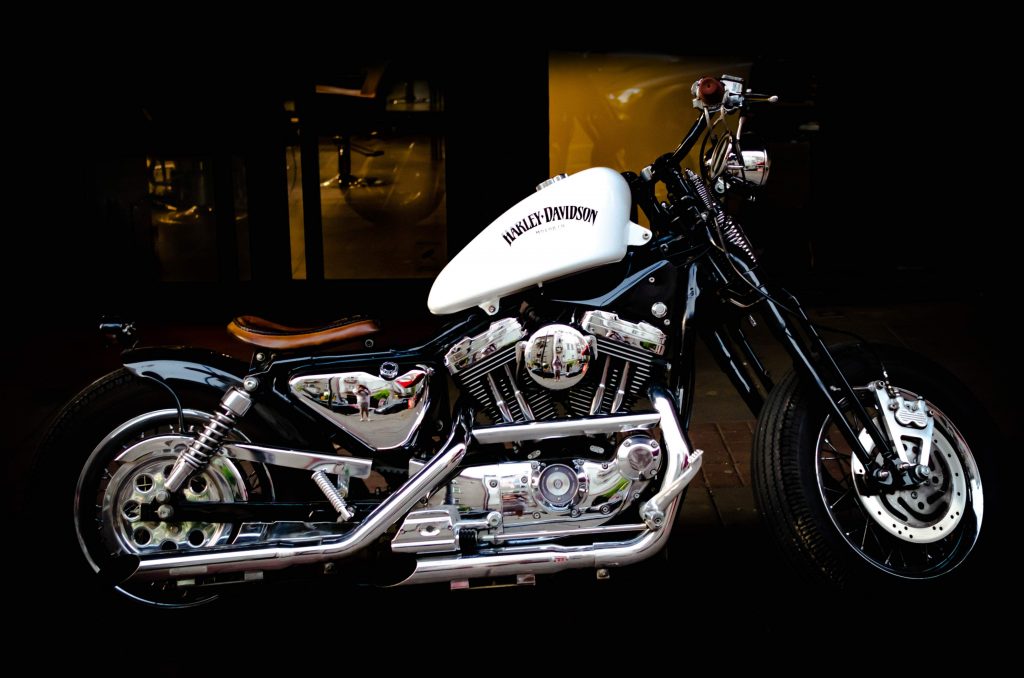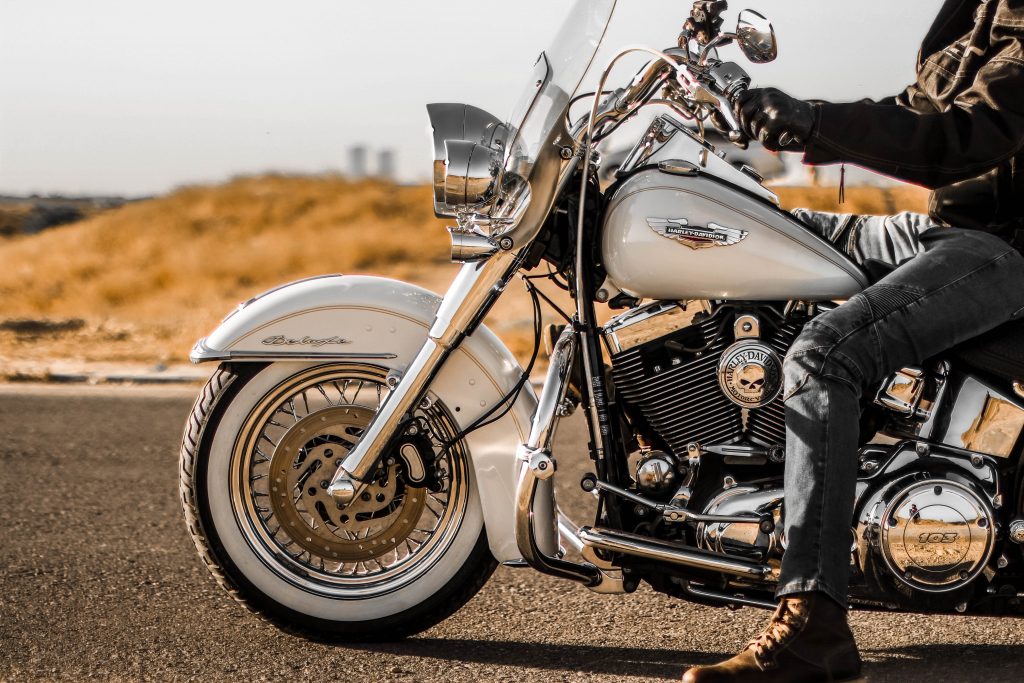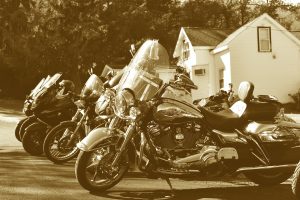“Mablethorpe is like the Monaco of Lincolnshire,” a coworker said, trying to make the horrible-looking weather forecast look better before a trip from Peterborough to the land where time and class forgot. Even though it’s raining and windy, the seaside town still has beach races every two weeks from October to March. Many brave people show up even on days like today.
I didn’t believe him. Monte Carlo and a town on England’s east coast both have casinos, but that’s about all they have in common. I didn’t know of any 2p shuffle machines, fish and chip shops, Greggs, or stores selling “I’m with stupid” t-shirts near the Cote d’Azur.
Still, I walked with four base layers and, for the first time this year, the lining in my jacket as I went to watch a friend race on the beach. Kane Dalton, a daredevil from BikeSocial and a former Gladiators finalist (you know, that 90s TV show with the lycra-clad athletes and 0% body fat where we all liked Jet), was asked by Harley-Davidson to do some beach-based dirt tracking after his success at Dirt Quake in the summer. IDP Moto was then asked by the American company to run a dozen “race-ready” Harleys in the world-wide series that includes the upcoming Snow Quake in Northern Italy. Anyway, it was up to BikeSocial to clean up the dirty Street Rod. But, thank goodness, that wasn’t my job.
All I had to do was hold a video camera and pat people on the back when they did something good or bad. Well, we’ll do that and look at the version that can be used on the road as part of our long-term test fleet. Here, you can see what my coworkers thought of it.
The Mablethorpe run was my 350th mile on the Street Rod, after a sad trip to Silverstone and back last month and several commutes. I say “glum” because at the time I didn’t understand why anyone would spend money on the little Harley. It has the most uncomfortable riding position of any bike I’ve ever ridden, among other problems we’ll talk about later.
There is one “but.”
But, as you can see, I was riding it wrong. I know it shouldn’t be that hard to sit on the seat and turn the throttle, but I had set myself up as if it were an easy-to-ride cruiser, with my feet out and my arms stretched out. And the bike was cursed from about mile 3 on because it was in that position. Wrong. It should come with a picture of a stickman hunched forward, with the balls of his feet on the foot pegs instead of his heels, and with his knees tucked in a little tighter. This picture should be printed on the fuel tank. So, it started to make sense once I figured out how to sit on the bike.
So, let’s talk about what else I like and don’t like:
GOOD: Engine/Gearbox: The 750 twin is more lively than its sibling, the Street 750, thanks to new heads, cams, a higher compression ratio, 18% more horsepower, 8% more torque, and an extra 1,000rpm. It’s quick enough at low revs, but the power is in the middle range and up to the red line. It runs out of revs quickly, so you have to throw gears at it if you want to go fast, but the torque is good enough for cruising around town and then overtaking if you want to. The gearbox feels good, and the action of the lever is unusually smooth.
GOOD: The clutch is easy to use, which is great for riders who are new, inexperienced, less confident, or just lazy.
GOOD: Price tag and badge. Cheap and cheerful with the right kind of badge, if that’s what you’re into. Harley-Davidson sells the bike as a first step into the brand, hoping that riders will eventually move up to bigger and better bikes.
GOOD: It’s supposed to get 54mpg, which is the first time in history that a manufacturer’s claims are pretty close to the truth. The tank is small at 13.2 liters, but you can drive 135 miles without stopping for gas.
Build Quality: The coatings, wiring connectors, and other details are better than on the Street 750, but you get what you pay for. Even though it has a “premium” badge on the tank, the switchgear and cut-off tie-wraps show that it was made on a budget.
BAD: The throttle connection is loose and jerky, which is not good for a beginner. This is more noticeable at low speeds and low revs, which makes riding in town less fun and maybe even more embarrassing than it should be.
BAD: The foot pegs didn’t have a spring return, they were way too narrow, and the rubber insert fell out on its own. Still, if it were any wider, the ground clearance would be hurt.
BAD: The riding position. I know I’ve said it before, but I can still hear my coccyx scream for days after each ride. Still, the more athletic, squat-like approach did help.
BAD: It’s heavy. For a motorcycle that’s meant to attract younger people to the brand, 238 kg is a lot to carry around. This makes it difficult to move around in a parking space, for example.
There’s a lot of value for £6745, which is about £100 per month over three years. However, there are a lot of other options for the same price, like the Yamaha MT-07 at £6199, the Honda CB650F at £6599, and the Kawasaki Z650 at £6099, to name a few.
SPECIFICATIONS OF TECHNOLOGY
- Engine Type
- V-Twin, single overhead cam, 4 valves per cylinder, water-cooled
- Displacement
- 749 cc
- Bore x stroke
- 85 x 66 mm
- Compression ratio
- 12:01
- Power
- 69.7 bhp @ 8,750 rpm
- Torque
- 48 lb-ft @ 5,000 rpm
- Fuel injection
- With a 42 mm throttle body and twin fuel injection ports,
- Emissions
- Euro 4
- Consumption
- 54mpg (claimed)
- Frame
- Tubular steel double cradle
- Front suspension
- Inverted 43 mm fork (no adjustment)
- The front wheel moves.
- 132 mm (5.2 in)
- Front wheel
- Cast Aluminium, 7 split-spoke 3.50″ x 17″
- Front tyre
- Michelin Scorcher 21, 120/70 R17, radial
- Suspension in back
- Twin tubular piggy-back shocks, and a preload that can be changed
- Back wheel drive
- 117 mm (4.6 in)
- Back wheel
- Cast Aluminium, 7 split-spoke 4.5″ x 17
- Back tire
- Michelin Scorcher 21 radials 160/60 R17
- Front brake
- Standard ABS, two-piston calipers, and two 300 mm fixed discs.
- Rear brake
- 300 mm disc, 2–piston caliper, ABS as standard
- Wheelbase
- 1,510 mm (59.4 in)
- Rake
- 27°
- Trail
- 99 mm (3.9 in)
- Fuel tank capacity
- 13.2 L – 2.9 gallons
- “Wet weight”
- 229kg (505 lb)
- Wet weight*
- 238 kg (525 lb)
- Seat level
- 765 mm (30.1 in)
- maximum height
- 1145 mm (45.0 in)
- Max width
- 870 mm (34.3 in)
- Max length
- 2130 mm (83.9 in)
- How many seats
- Two seats





